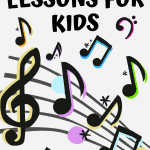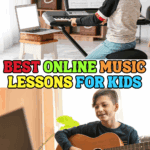Best Online Music Lessons for Kids | Tried and Tested
Online music lessons for kids became a big part of our homeschool when I realized I couldn’t teach what I didn’t know, especially when it came to instruments.
My son wanted to learn piano, then guitar, then drums (of course), and I had no idea where to start.
We tested a bunch of free and paid programs over the years, some clicked, some didn’t.
This guide pulls together what actually worked for us, what didn’t, and what might fit depending on your child’s learning style, age, and interest level.
Whether you’re just getting started or looking for more structure, these online lessons can make music learning doable, even if you’re not musical yourself.
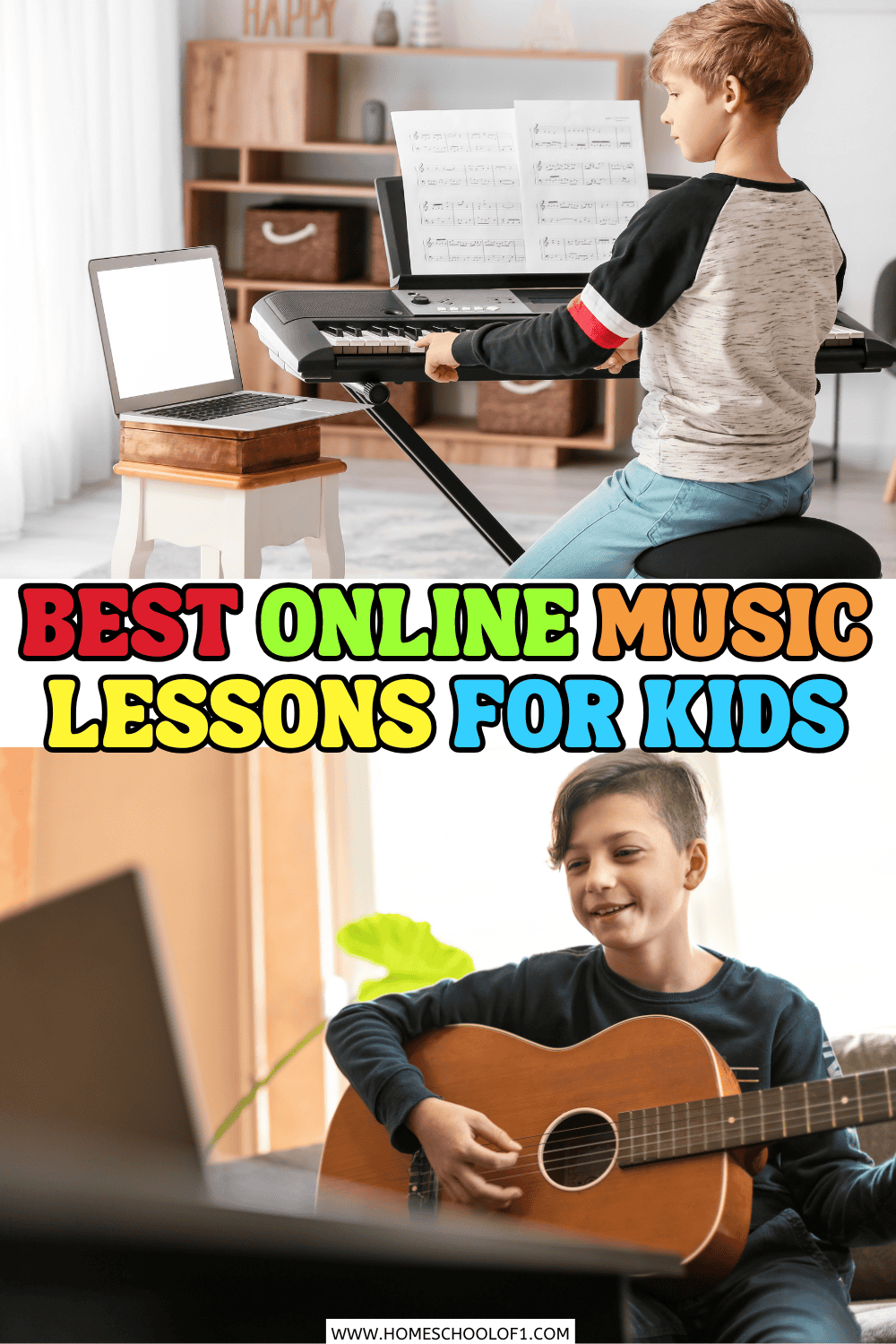
**This post may contain affiliate links. As an Amazon Associate and a participant in other affiliate programs, I earn a commission on qualifying purchases.**
The Easiest Online Music Lessons for Kids to Start With
Piano was the easiest place for us to start. It’s straightforward, easy to practice, and worked well with online lessons. It’s intuitive, easy to practice without a lot of setup, and a great starting point for young learners.
We started with Hoffman Academy, and it’s still the program I recommend most often. The free version includes over 300 step-by-step video lessons that gradually build skills without overwhelming kids. My son liked the friendly teaching style, and it worked well even when I wasn’t able to sit beside him.
If you want more structure, the premium plan adds interactive games, practice tools, and printable materials. You can also use code LEARN for 10% off if you upgrade.
We also briefly used Simply Piano, a tablet-based app that gives real-time feedback and rewards progress in a gamified way. It’s especially helpful for kids who like fast wins and visual learning.
If you’re focusing just on piano, I’ve put together a full comparison of the best online piano lessons for kids based on what actually worked in our home.
What Helped Us Most with Online Guitar Lessons
Guitar wasn’t the easiest instrument to start at home, especially without a musical background, but a few programs really helped make it doable.
Some offered structure, others just made practice more enjoyable. Here’s what worked best for us:
Simply Guitar – This app teaches guitar through short lessons and real-time feedback. It’s designed for beginners and works well for visual learners, especially on a tablet. The interface feels like a game, which helped keep my son motivated in the early stages. That said, it’s light on theory and works best alongside other tools or live support.
Kids Guitar Zone – This completely free website covers guitar basics in a clear, step-by-step format. It’s ideal for younger kids who are just starting and need a slower pace. While the videos are simple, they’re effective, and great if you’re looking for something budget-friendly to test interest before committing.
Outschool Guitar Tutors – When we needed more structure, Outschool was a great next step. They offer both private and small-group guitar classes with experienced teachers. It helped my son work through technique issues he couldn’t quite fix with self-paced videos.
Kids Guitar Dojo – This is a more structured, activity-based curriculum that blends music education with hands-on tasks and games. It kept things fun while still building proper technique and rhythm skills. It’s a good choice if your child prefers variety in how they learn.
Gentle Guitar – For kids who thrive with one-on-one guidance, Gentle Guitar offers weekly live lessons with a consistent teacher. It’s more formal and requires a regular schedule, but it’s one of the most effective options we found for accountability and progress.
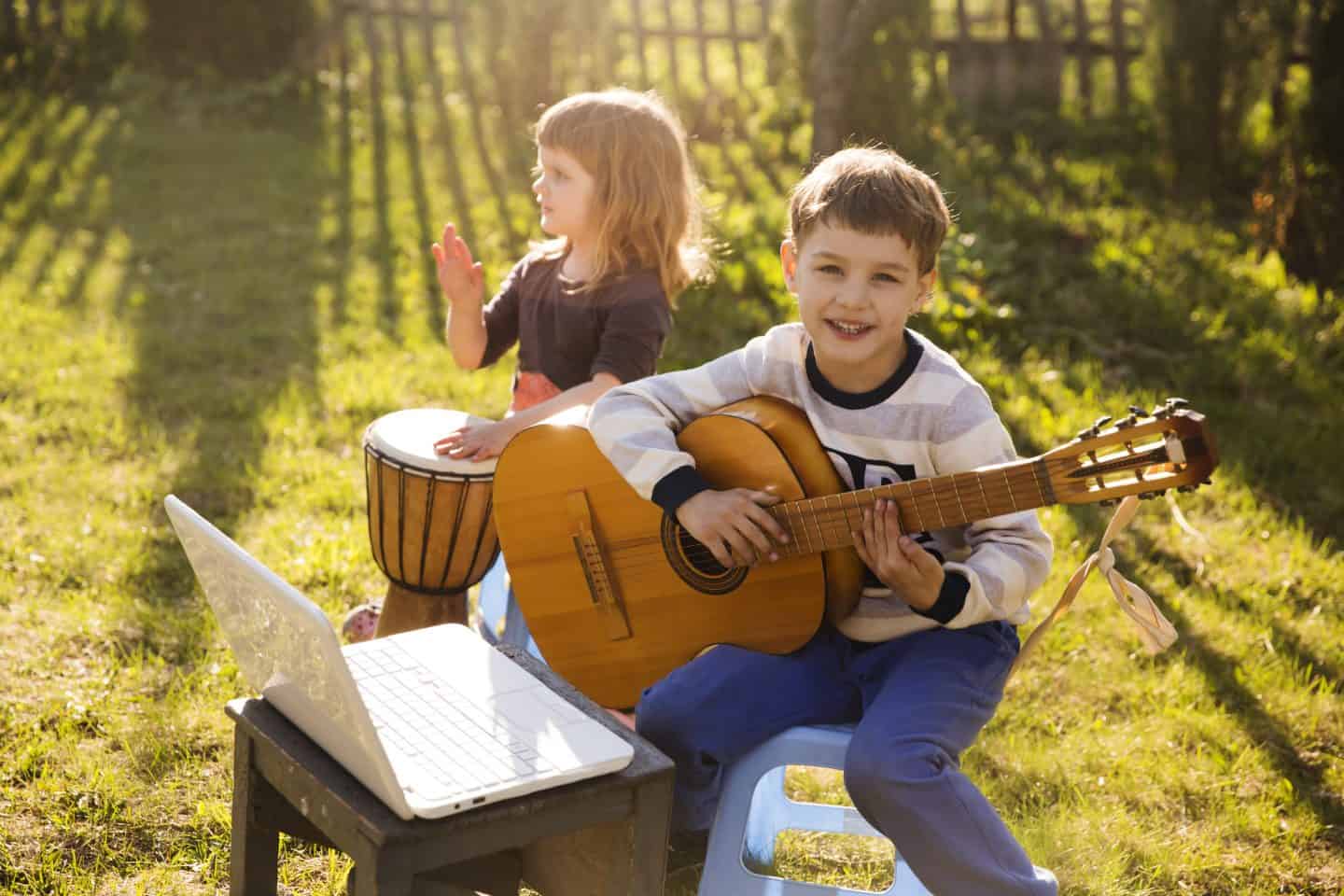
Why Drums Were a Surprise Hit (Even Without a Full Kit)
If your child prefers something a little louder, drums can be a great entry point, especially since rhythm is so foundational for other instruments too. We didn’t have a full drum kit, but that didn’t stop my son from getting excited about learning online.
Here’s what helped us get started:
My Music Workshop – The lessons are upbeat and simple, making them ideal for younger kids who just want to try drumming without pressure. Their six-part beginner series is short, accessible, and easy to follow, even if all you have are a pair of drumsticks and a practice pad (or a pillow!).
Drumeo – This interactive platform makes learning drums feel like play. The video lessons are high-quality and really engaging. While it’s a paid service, they offer a free first lesson and a lot of value in their trial period. Great for kids who already have some rhythm and want more challenge or structure.
Outschool Drum Tutors – Outschool offers a wide range of live virtual drum classes, from beginner rhythm training to more advanced technique. These were helpful when my son needed real-time feedback or motivation beyond video lessons.
Sage Music – This is a more formal option that builds drumming skills through a personalized lesson plan. It’s ideal if your child is serious about learning and would benefit from consistent progress tracking and teacher support.
Learning Violin Online: What Actually Helped
Violin can be one of the harder instruments to learn without in-person instruction, especially when it comes to posture and bowing. But we were surprised by how effective a few online resources were, especially when paired with slow, consistent practice.
Learn Music with Meg – This is a great starting point for younger kids. Meg’s teaching style is friendly and approachable, and she breaks down the basics in a way that feels doable. It’s perfect for kids who are brand new to violin and need a gentle introduction.
Outschool Violin Classes – Outschool has a wide range of violin tutors offering both group and private lessons. We liked using this when we needed live feedback or more structure. You can choose one-off workshops to try things out, or sign up for ongoing lessons if your child wants to go deeper.
Fiddlerman – This site was originally created for adult learners, but older kids, especially motivated ones, can definitely benefit. The lessons are thorough and include videos, sheet music, and technique tips. It’s a solid free option for self-motivated learners who don’t need much hand-holding.
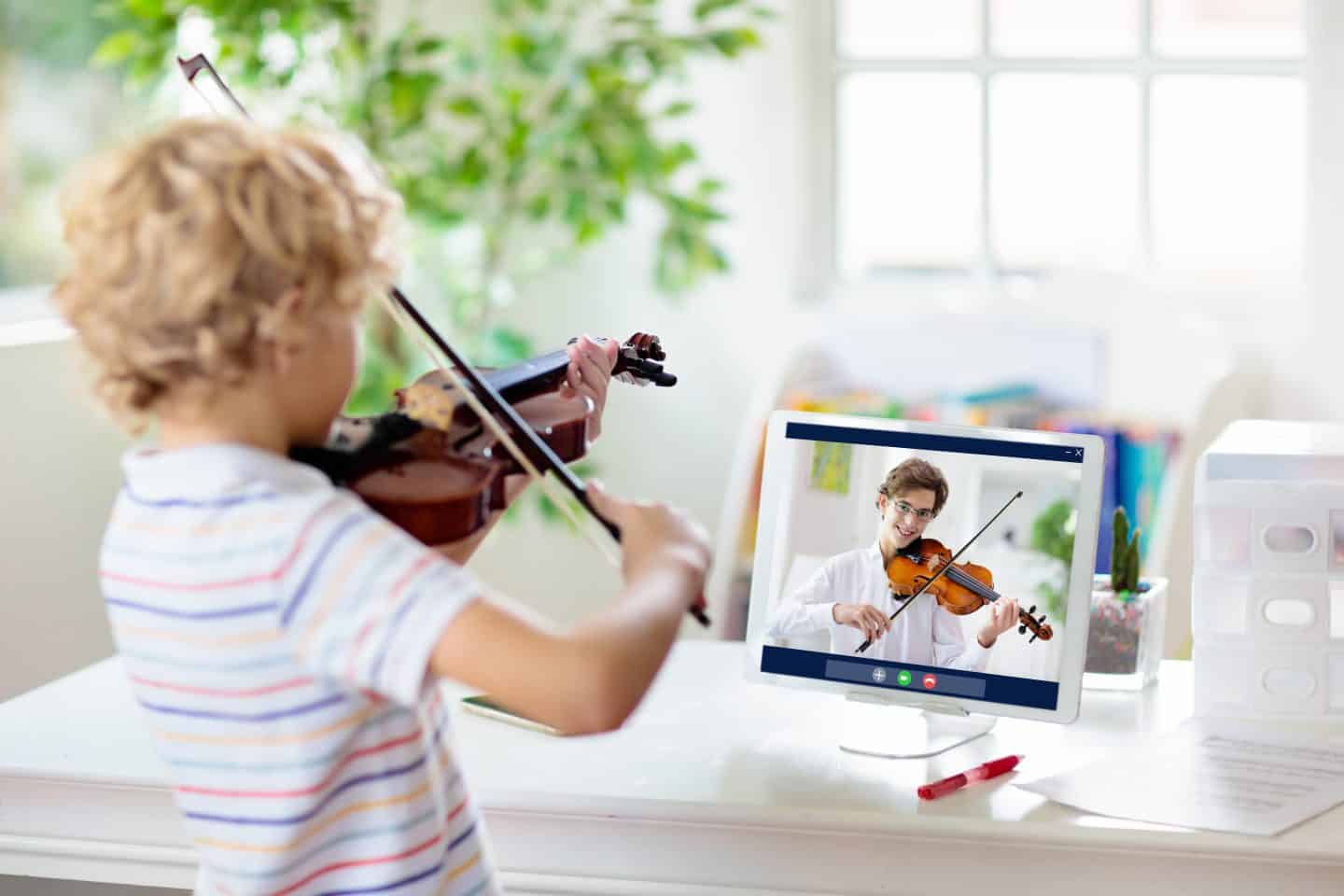
Are Online Music Lessons Effective? Our Experience
I wasn’t sure online music lessons would stick, especially without a teacher in the room. But over time, we found that structured video programs and live virtual classes can absolutely work, particularly when paired with an instrument your child is excited to learn.
Programs like Hoffman Academy and Simply Guitar kept my son engaged longer than any workbook ever did. Self-paced lessons gave us flexibility, while live tutors gave him a boost when he hit a wall. If your child enjoys screens and learns well with visual instruction, online music lessons can be surprisingly effective, even for beginners.
If you’re looking for something more comprehensive, we’ve also used a full music homeschool curriculum to build in music appreciation, theory, and structured progression alongside instrumental lessons. It’s been a helpful way to keep music learning consistent, even when we weren’t actively focusing on one instrument.
If you’re looking for structured lessons, I highly recommend Music In Our Homeschool as a fantastic starting point.
Music Lessons by Age: What Works When
Kids can start exploring music at any age, but we found that online music lessons usually work best once a child can follow instructions independently, typically around age 4 or older.
- Toddlers (1–3 years): Rhythm-focused play is best, think shakers, drums, or sing-alongs. No structured lessons needed yet.
- Preschool & Early Elementary (4–7 years): Piano, ukulele, and recorder are great beginner-friendly instruments. They’re easy to access and build fine motor coordination and basic music understanding.
- Upper Elementary & Middle School (8+): Guitar, violin, and drums are a better fit here, as they require more physical control and patience.
The best age to start is when they’re excited about it, enthusiasm is more important than timing.
Finding the Right Fit for Your Child
Every child learns differently. Some kids love the freedom of self-paced lessons. Hoffman Academy and Kids Guitar Zone worked well for that in our home. Others need more structure and feedback, and that’s where Outschool and Gentle Guitar made a difference.
What helped us most was starting simple. We tried free lessons first to gauge interest, then added live classes when my son needed extra support. Mixing formats gave us flexibility without overwhelming him (or me).
Whichever path you take, online music lessons can absolutely be a fun, affordable, and low-pressure way to introduce music at home.
Last Updated on 7 July 2025 by Clare Brown

